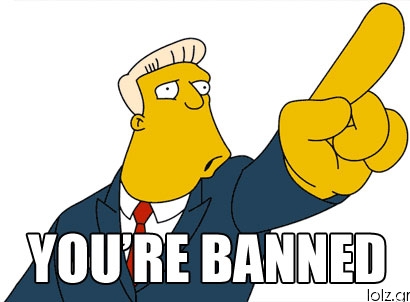Obscenity in Media: The law revisited
Ever wondered if Page-3s are too explicit? Or that the glazed supplements are too much for your children to play a peek-a-boo? Even annoyed at the vast amount of glittering and sexually motivated information available in public domain and well within reach of your innocent children? Well if any of the answers to the above are yes, one may as well have a look with interest at the decision of the Supreme Court dealing with the issue.
In India where the right to freedom of speech and expression is wide but not as wide as the First Amendment of the US Constitution would carry, and in this country where the freedom is subject to reasonable restrictions, the Supreme Court was called upon by a lawyer to adjudge the limits upto which the media could go to portray such stuff on the mediums of public information in a petition filed by a famed lawyer. The Court noted the anxiety: "The Lawyer Petitioner who appeared in person submitted that he filed this petition to seek protection from this Court to ensure that minors are not exposed to sexually exploitative materials, whether or not the same is obscene or is within the law. The real objective is that the nature and extent of the material having sexual contents should not be exposed to the minors indiscriminately and without regard to the age of minor. The discretion in this regard should vest with parents, guardians, teachers or experts on sex education." All major national newspapers were made parties to defend their actions before the Court.
The decision in particular noted some of specific instances which compelled the petition to approach the Supreme Court, a sentiment which would be shared by most parents: "If the minor is of an age where he/she cannot understand the meaning, he/she would like to know from others and if the minor has come to an age where he/she is able to understand this would certainly energize his grey cells in the brain and would titillate him/her. What kind of culture and message the article titled "moan for more" or "get that zing bag into your sex life" convey. Is it really necessary for a child to read at a very early stage the concept of masturbation, ejaculation, penetration etc. as is normally discussed by so called sex experts in columns of newspapers. At what age should we start telling our children where to have sex and how to break their monotony. News item on MMS clipping is certainly not obscene but do we really need to show the nude photographs with only small black stripes on the private parts to our children without even bothering of its effect."
The Supreme Court, however, was of the opinion otherwise. It chose not to issue any particular directions to the media/newspapers being of the opinion that the process of publication of such content in the media was regulated. Relating to the context in which such publications were made in the media, the Court set aside the presumption that it was meant to deprave the minds of the young. The Court inter alia observed;
In view of the foregoing legal propositions the pictures in dispute had been published by the respondents with the intent to inform readers of the current entertainment news from around the world and India. The respondent’s newspaper seeks to provide a wholesome reading experience offering current affairs, sports, politics as well as entertainment news to keep its readers abreast of all the latest happenings in the world. The pictures that have been published should not be viewed in isolation rather they have to be read with the news reports next to them. In the event, that a particular news items or picture offends any person they may avail of the remedies available to them under the present legal framework. Any steps to impose a blanket ban on publishing of such photographs, in our opinion, would amount to prejudging the matter as has been held in the matter of Fraser vs. Evans, 1969 (1) QB 549. The definition of obscenity differs from culture to culture, between communities within a single culture, and also between individuals within those communities. Many cultures have produced laws to define what is considered to be obscene, and censorship is often used to try to suppress or control materials that are obscene under these definitions. The term obscenity is most often used in a legal context to describe expressions (words, images, actions) that offend the prevalent sexual morality. On the other hand the Constitution of India guarantees the right of freedom to speech and expression to every citizen. This right will encompass an individuals take on any issue.However, this right is not absolute, if such speech and expression is immensely gross and will badly violate the standards of morality of a society. Therefore, any expression is subject to reasonable restriction. Freedom of expression has contributed much to the development and well-being of our free society.
This right conferred by the Constitution has triggered various issues. One of the most controversial issues is balancing the need to protect society against the potential harm that may flow from obscene material, and the need to ensure respect for freedom of expression and to preserve a free flow of information and idea. Be that as it may, the respondents are leading newspapers in India they have to respect the freedom of speech and expression as is guaranteed by our constitution and in fact reaches out to its readers any responsible and decent manner. In our view, any steps to ban publishing of certain news pieces or pictures would fetter the independence of free press which is one of the hallmarks of our democratic setup. In our opinion, the submissions and the propositions of law made by the respective counsel for the respondents clearly established that the present petition is liable to be dismissed as the petitioner has failed to establish the need and requirement to curtail the freedom of speech and expression.
We are also of the view that a culture of ’responsible reading’ should be inculcated among the readers of any news article. No news item should be viewed or read in isolation. It is necessary that publication must be judged as a whole and news items, advertisements or passages should not be read without the accompanying message that is purported to be conveyed to the public. Also the members of the public and readers should not look for meanings in a picture or written article, which is not conceived to be conveyed through the picture or the news item. We observe that, as decided by the American Supreme Court in United States v. Playboy Entertainment Group, Inc, 146 L ed 2d 865, that, "in order for the State to justify prohibition of a particular expression of opinion, it must be able to show that its action was caused by something more than a mere desire to avoid the discomfort and unpleasantness that always accompany an unpopular viewpoint." Therefore, in our view, in the present matter, the petitioner has failed to establish his case clearly. The petitioner only states that the pictures and the news items that are published by the respondents 3 and 4 ’leave much for the thoughts of minors’. Therefore, we believe that fertile imagination of anybody especially of minors should not be a matter that should be agitated in the court of law.
Have a look at the decision, the implications of which are that the Courts would be reluctant to admit a challenge to such publications. The key to any such regulation, therefore, now lies with the executive alone which regulations the broadcast and publication of such information. Well, so much for the plight of the parents seeking to protect their children from the windfall knowledge available in public domain.


Yorumlar
Yorum Gönder